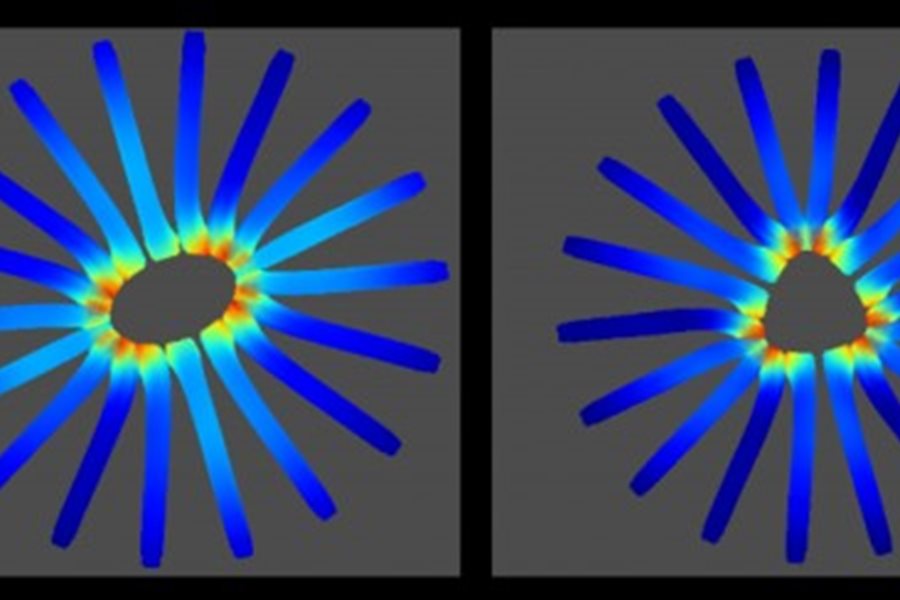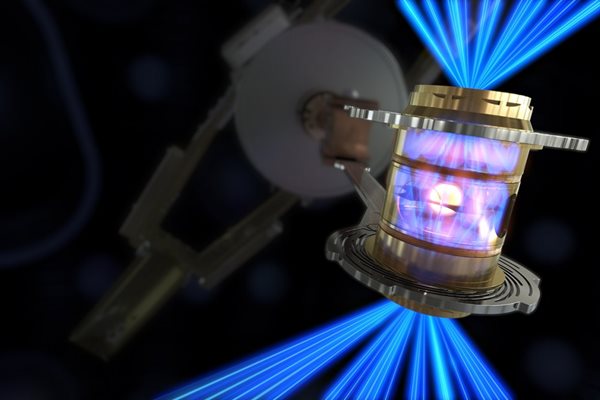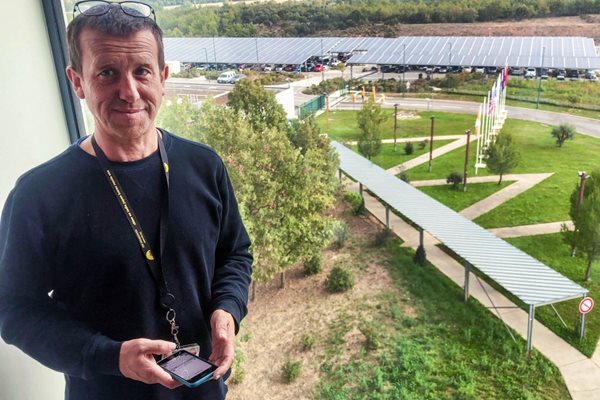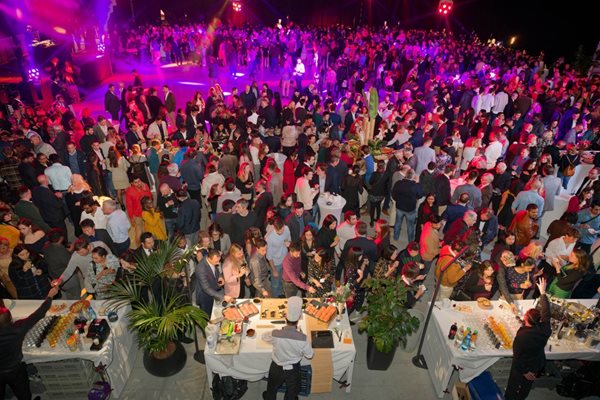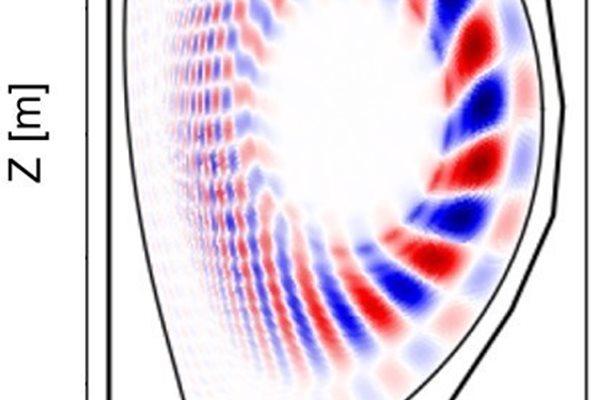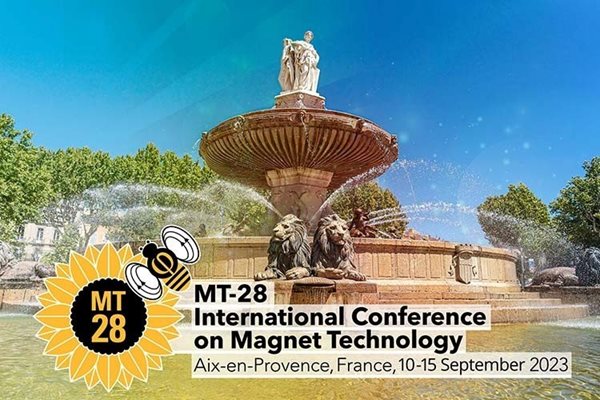
you're currently reading the news digest published from 05 Dec 2022 to 12 Dec 2022
featured4
of-interest3
press22
featured
Precision engineering | Translating physics limits to millimetres
The manipulation of massive components under tight tolerances presents a formidable challenge. While reference to millimetres can seem commonplace, satisfying ITER's millimetre-level alignment tolerance targets over long distances and with very large components—such as ITER's 17-metre-tall, 360-tonne D-shaped toroidal field magnets—places the challenge firmly in the world of precision engineering. Put another way, the alignment of books on your shelf to the same precision requirements as ITER's vertical magnets would require a positional accuracy finer than the width of a human hair. The need for such alignment precision comes from physics. The superconducting coils produce the magnetic field that confines the plasma, and the plasma needs to be as close to perfectly symmetric as possible—a perfect doughnut shape without bumps or lumps on its surface. A bumpy plasma can cause very large localized power fluxes on ITER's internal wall and is vulnerable to sudden stops, or disruptions. Thus, precise physics principles have to be used to guide the assembly of ITER's magnetic and first-wall components to ensure that the assembled tokamak is capable of achieving its fusion goals. Similar to the temperature of the porridge in the 19th-century fairy tale Goldilocks and the Three Bears, the translation of these physics limits to assembly millimetres needs to be 'just right.' Set the tolerances too large and we risk assembling a machine unable to achieve its fusion goals. Set them too small and we end up creating a puzzle without a solution resulting in a machine that cannot be assembled.  ITER's main superconducting magnets will be assembled 'warm' (that is, at room temperature), with no current flowing in them. However, they will operate at cryogenic temperatures (close to 4 Kelvin, or -269 °C) and the coils will be 'energized'—carrying the large currents that will produce the strong magnetic fields required for fusion. Industry-leading ANSYS simulations provided by the European Domestic Agency Fusion for Energy allow the mapping of warm assembly configurations to the cold/energized operating configurations required to produce plasmas, as shown in the animation of the toroidal field coil energization step to the right. The dimensional tolerances of ITER's magnets are controlled via a sequence of detailed measurements taken at every step of a coil's manufacture and assembly. These measurements use lasers to track the precise geometry of each coil from its birth in the factory to its final installation the Tokamak pit. The measurement of deviations from ideal 'as-designed' parts on a computer screen to 'as-built' coils ready for installation at ITER forms a vital part of our assembly strategy. The assembly tolerances required to align a pair of toroidal field coils in the Tokamak pit are shown in the image below. The proximity of an as-built operating configuration to our physics limits requires a further 'translation' of the magnet's physical position into the 'physics units' within which our limits are defined. This is possible thanks to the support provided by the Russian Domestic Agency which enables the generation of precise 3D magnetic field maps generated by these as-built coils deformed under their operational loads. From these maps, the proximity to wall heat load and plasma performance limits is assessed by applying physics modelling tools respectively developed within the ITER Organization and provided by the US Domestic Agency for each of these two limits. The limits themselves are based on extensive experimental studies for ITER, which have been coordinated by the International Tokamak Physics Activity (ITPA). The original duration for a round-trip calculation—that is, from warm magnet positions to proximity to physics limits—as required by the reverse engineering team responsible for the assembly process used to approach one month. An effort was launched in 2021 to accelerate this round-trip analysis in support of the assembly and installation of the first ITER vacuum vessel sector module (#6). The discovery of fast proxy models based on a spectral filtering technique enabled a fifty-billion-time speed-up (5 × 10^10) of the full calculation workflow—from four weeks to 50 microseconds. This acceleration opened the door to Monte Carlo simulations which have processed millions of trials for possible 'warm' assembly configurations with regard to their acceptability from the physics point of view. Using this enormous database of assessments it is possible to provide guidelines to the assembly teams to decide whether the assembly configuration that they have achieved is acceptable or not. Close collaboration between the assembly, reverse engineering, blanket, and science teams has enabled the development of a set of 'just right' physics assembly guidelines, as shown above. These guidelines, together with parallel compliance assessments of the tokamak's mechanical interfaces carried out by the reverse engineering team, result in a grounded alignment strategy based on physics acceptability and engineering feasibility. The assembly of sector module #6 and its positioning in the Tokamak pit was successfully implemented according to this integrated alignment strategy for the toroidal field coils. An extension of this approach is underway to include the remaining major coil systems in ITER (6 poloidal field coils and the central solenoid) so that it may be applied to the complete tokamak assembly process.
ITER's main superconducting magnets will be assembled 'warm' (that is, at room temperature), with no current flowing in them. However, they will operate at cryogenic temperatures (close to 4 Kelvin, or -269 °C) and the coils will be 'energized'—carrying the large currents that will produce the strong magnetic fields required for fusion. Industry-leading ANSYS simulations provided by the European Domestic Agency Fusion for Energy allow the mapping of warm assembly configurations to the cold/energized operating configurations required to produce plasmas, as shown in the animation of the toroidal field coil energization step to the right. The dimensional tolerances of ITER's magnets are controlled via a sequence of detailed measurements taken at every step of a coil's manufacture and assembly. These measurements use lasers to track the precise geometry of each coil from its birth in the factory to its final installation the Tokamak pit. The measurement of deviations from ideal 'as-designed' parts on a computer screen to 'as-built' coils ready for installation at ITER forms a vital part of our assembly strategy. The assembly tolerances required to align a pair of toroidal field coils in the Tokamak pit are shown in the image below. The proximity of an as-built operating configuration to our physics limits requires a further 'translation' of the magnet's physical position into the 'physics units' within which our limits are defined. This is possible thanks to the support provided by the Russian Domestic Agency which enables the generation of precise 3D magnetic field maps generated by these as-built coils deformed under their operational loads. From these maps, the proximity to wall heat load and plasma performance limits is assessed by applying physics modelling tools respectively developed within the ITER Organization and provided by the US Domestic Agency for each of these two limits. The limits themselves are based on extensive experimental studies for ITER, which have been coordinated by the International Tokamak Physics Activity (ITPA). The original duration for a round-trip calculation—that is, from warm magnet positions to proximity to physics limits—as required by the reverse engineering team responsible for the assembly process used to approach one month. An effort was launched in 2021 to accelerate this round-trip analysis in support of the assembly and installation of the first ITER vacuum vessel sector module (#6). The discovery of fast proxy models based on a spectral filtering technique enabled a fifty-billion-time speed-up (5 × 10^10) of the full calculation workflow—from four weeks to 50 microseconds. This acceleration opened the door to Monte Carlo simulations which have processed millions of trials for possible 'warm' assembly configurations with regard to their acceptability from the physics point of view. Using this enormous database of assessments it is possible to provide guidelines to the assembly teams to decide whether the assembly configuration that they have achieved is acceptable or not. Close collaboration between the assembly, reverse engineering, blanket, and science teams has enabled the development of a set of 'just right' physics assembly guidelines, as shown above. These guidelines, together with parallel compliance assessments of the tokamak's mechanical interfaces carried out by the reverse engineering team, result in a grounded alignment strategy based on physics acceptability and engineering feasibility. The assembly of sector module #6 and its positioning in the Tokamak pit was successfully implemented according to this integrated alignment strategy for the toroidal field coils. An extension of this approach is underway to include the remaining major coil systems in ITER (6 poloidal field coils and the central solenoid) so that it may be applied to the complete tokamak assembly process.

The animation shows displacements resulting from the energization of ITER's 18 toroidal field coils. (The displacements are magnified 50 times for illustrative purposes.) Maximum displacements are found at the centre of the tokamak where the vertical sections of each D-shaped magnet butt together to form a circular vault (in the ideal case). Once the coils are energized, the assembly gaps left between adjacent coils close. A non-axisymmetric distribution of assembly gaps generates a non-circular vault and hence a non-axisymmetric toroidal magnetic field.
Congratulations! | ITER applauds NIF fusion breakthrough
ITER scientists hailed the latest experimental results at the National Ignition Facility (NIF) at Lawrence Livermore National Laboratory in California: the achievement of 'breakeven' fusion energy. 'When future generations look back on the evolution of fusion energy research, I believe this will be recognized as a historic milestone,' said ITER Director-General Pietro Barabaschi. NIF's experiment used 2.05 megajoules of laser energy to produce 3.15 megajoules of fusion energy, reaching a Q value of 1.5. The NIF approach to fusion differs sharply from that of ITER. Whereas tokamaks use 'magnetic confinement'—injecting a few grams of deuterium and tritium (DT) into a massive toroidal vacuum chamber—NIF uses 'inertial confinement,' with nearly 200 high-energy lasers focused on the walls of a small metallic target (called a 'Hohlraum') which surrounds a DT pellet the size of a peppercorn. The X-rays reflected by the inner walls of the Hohlraum to the DT target create conditions that compress the pellet to roughly 1,000 times the density of water while also heating it to more than 100 million degrees Celsius, creating the conditions for fusion. Both approaches require extreme engineering: high precision, advanced materials, and further innovation on how to efficiently harness the heat produced by the fusion reaction. For both approaches, the aim is to produce more energy from the fusion fuel than the energy used to heat that fuel and to demonstrate that the self-heating of the DT gas by the fusion reaction becomes larger than its heat losses. This is what NIF has demonstrated. The trajectory of NIF's recent successes is promising. The best previous performance achieved, in August 2021, was 1.35 megajoules, about 70% of the laser energy delivered—which in turn was about 25 times better than NIF's 2018 experiments. Over the past several years, NIF's experiments have achieved ever greater precision, leading to a higher Q value (output versus input). In experiments last August, the output energy, 1.35 megajoules, was about 70% of the input laser energy used. Many were hopeful that a net energy gain was not far away. That goal was reached with the experiments announced today. Also important to consider is that only a small fraction (~1%) of the laser input power is reflected from the walls of the Hohlraum onto the DT target; therefore from a purely plasma energy balance standpoint the value of Q is significantly higher (i.e., achieving ignition). 'This is an exciting time for fusion energy,' said ITER Director-General Barabaschi. 'These results from NIF are a further confirmation of the science of fusion energy. It gives all of us—here at ITER as well as across the global fusion R&D community—renewed motivation as we tackle the remaining engineering challenges that lie ahead for self-heated fusion plasmas.' Click to read press releases from the US Department of Energy and Lawrence Livermore National Laboratory.
Portrait | Ain't no problem small enough
Soft FM keeps the ITER site humming along. Here's a riddle: what do a wonky door handle, seating in the ITER Council room, and a stray cat infiltrating the Tokamak Complex have in common? The answer? They are all topics that the ITER's Site Management Section (SIM) takes care of so that day-to-day operations run smoothly and the quest for fusion energy can forge ahead. 'Our objective is to let everybody else concentrate on difficult scientific or engineering issues without having to worry about things like the vending machines or the parking lot,' says Mark Henderson, who joined ITER as the Facility Management Technician eight years ago. 'All those coming to the ITER site are our clients and we make sure they can work in the best possible conditions.' If it seems like Henderson is quite hospitable in his approach, this shouldn't be a surprise; he is a veteran of the hotel industry and was previously the Managing Director of a Hilton in England. But now, instead of handling corked bottles of fine wine or luxury linen suppliers, Mark is responsible for maintenance and services for the buildings, roads, and green spaces across the 180-hectare ITER site. The work, which includes everything from canteen menus to electric service cars to office cleaning, is known as 'Soft FM.' This may sound like an easy-listening radio station but it is shorthand for 'soft facilities management' and at ITER, this is the responsibility of the SIM team. With some regular tasks planned months in advance—such as clearing brush to reduce the risk of fire or scheduling an annual safety walk with Agence Iter France—others are more occasional, such as the purchase of chairs for the ITER Council room. Meanwhile, the daily excitement comes from solving the myriad of unexpected issues that people report using a 24/7 online ticketing system. Every ticket issued sends an alert to Henderson, and with about 7,000 such alerts a year, his phone buzzes constantly. Each problem is evaluated and prioritized with ITER's Soft FM contractor VPIS, and numerous tickets get solved with the help of their subcontractor, ONET. As for the wonky door handle, it may seem minor but when that problem popped up on the ticketing system in October 2022, it was something of a milestone: it was the 28,000th alert since the system was inaugurated in 2018. Soft FM's not the most glamorous job at ITER but this doesn't bother the team. 'It may seem boring because it's somebody saying, 'My heating doesn't work,' but we're happy to play this role, and find reward in providing good service,' says Wouter van Baaren, the Section Leader of SIM. As for Henderson, after dealing with hotel customers, the work at ITER is quite fulfilling. 'I think we get more thanks than the scientists! They'll eventually get much bigger praise, but we get more recognition than most people on site because what we do is very visible.' And a last word about the stray cats—Henderson is liaising with a local rescue association to make sure that the cat that managed to infiltrate the Tokamak Complex earlier this year, and any others, find good homes.
ITER Awards 2022 | A tribute to dedication and excellence
On 30 November 2022, five ITER teams were recognized for excellence during the annual ITER Achievement Awards ceremony and end-of-year celebration. Now in its third year, the ITER Achievement Awards seek to pay tribute to the dedication and achievements of teams across the project by recognizing exceptional achievements. For this cycle, more than 60 nominations were received in four categories in the weeks that preceded the ceremony. The suggestions were sorted to identify 3-5 final nominations in each category by eliminating the teams who had won in a previous year, and favouring those who received multiple nominations. The shortlist—with 3 to 5 nominations per category—was then put to the vote, with each staff member casting one vote per category. The winners were announced during the end-of-year celebration, with approximately 1,600 people attending. The Director-General presented a representative of each winning team with a polished ingot of ITER-grade F316 stainless steel surmounted by a lucite plate bearing the ITER logo and the declaration, "You are the star makers." For the First-of-a-Kind Component Team Award, the winner was the poloidal field coil manufacturing team in recognition of the successful completion of a multi-year effort to fabricate all the double pancake windings for European poloidal field coils PF2, PF3, PF4 and PF5, all of which are now either completed or in the final stages of manufacturing. For the Balance-of-Plant Systems Team Award, the winner was the Instrumentation and Control Infrastructure Section for the largest handover of engineering work packages (more than 50) to the construction teams. (Engineering work packages reunite all the system and geographical information necessary required for the installation of components.) For the Installation and Assembly Sequence Team Award, the winner was the Sector Modules Delivery & Assembly Division for the installation of vacuum vessel sector module #6—an extremely complex first-of-a-kind component integration and assembly operation involving bespoke tools, delicate crane operations, and safety considerations at unprecedented scale. For the Best Support for the ITER Project Team Award, all ITER Organization assistants and secretaries won the award for unfailing support during an immensely challenging transition year, showing steadiness, reactivity, and resourcefulness—whether preparing routine correspondence and documentation, advancing procurement, budget, human resources and travel processes, or in responding to the unique challenges that came with 2022. In addition, a fifth award was presented by ITER Organization Director-General Pietro Barabaschi to highlight the importance and value of the issues raised by one ITER team—the Vacuum Delivery & Installation Section (Machine Construction Department)—regarding the identification of leaks in the thermal shield cooling pipes and the efforts to determine the root cause. The Director-General emphasized the consequences these leaks could have had eventually on machine functionality, and the importance of raising awareness when any such issues are found, as part of a healthy project quality culture.
of-interest
12th ITER International School: registration is open
Registration is open now for the 12th ITER International School, which will be held from 26 to 30 June 2023 in Aix-en-Provence, France. Hosted by Aix-Marseille University, the 2023 school will address a particularly timely and multidisciplinary topic—'The Impact and Consequences of Energetic Particles on Fusion Plasmas." Plasma self-heating by fusion-born alpha-particles, the influence of energetic particles on stability, how to diagnose energetic particle transport and loss, and the understanding of runaway electrons are all part of the planned scientific program. Click here to see the School website and for further information about registration. --Cutting-edge predictive simulation with the ORB5 code [T. Hayward-Schneider] showing a fast ion driven instability (n=12 Toroidal Alfvén Eigenmode) in ITER.
Abstract submission opens for MT-28
The 28th International Conference on Magnet Technology (MT-28) will be held in Aix-en-Provence, France, during the week of 10 to 15 September 2023. Abstract submission is open now through 20 February 2023. MT-28 is the major international forum for magnet-related technology and design. Conference aims are threefold: to diffuse into the scientific community information about new applications for magnets; to encourage an exchange between research activities and industrial applications; and to encourage professional scientists and engineers to follow careers in magnets. It will be supported in 2023 by the fusion project ITER, with opportunities to visit the nearby ITER site and see the huge ITER superconducting magnets in various stages of manufacturing and assembly. The foundation of the conference remains the scientific program, with conference presenters having the opportunity to submit papers to a special edition of the prestigious IEEE Transactions on Applied Superconductivity (impact factor > 1.9). Please see this website for abstract submission.
FuseNet Master's Thesis Prize 2022
Thesis supervisors are invited to nominate a student for the 2022 FuseNet Master Thesis Prize by 1 February 2023. FuseNet will award the prizes to students who write outstanding Master's theses that were (at least partially) carried out and completed across Europe. The prizes serve to highlight the important research that is carried out by dedicated and talented fusion students. See more about the 2021 winners here. Learn more about the nomination process on the FuseNet website.
